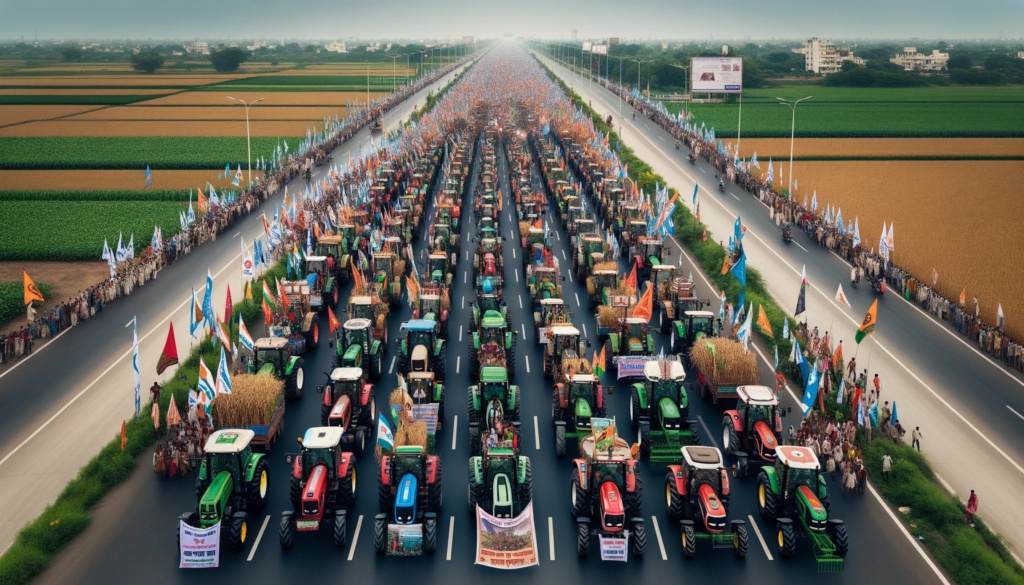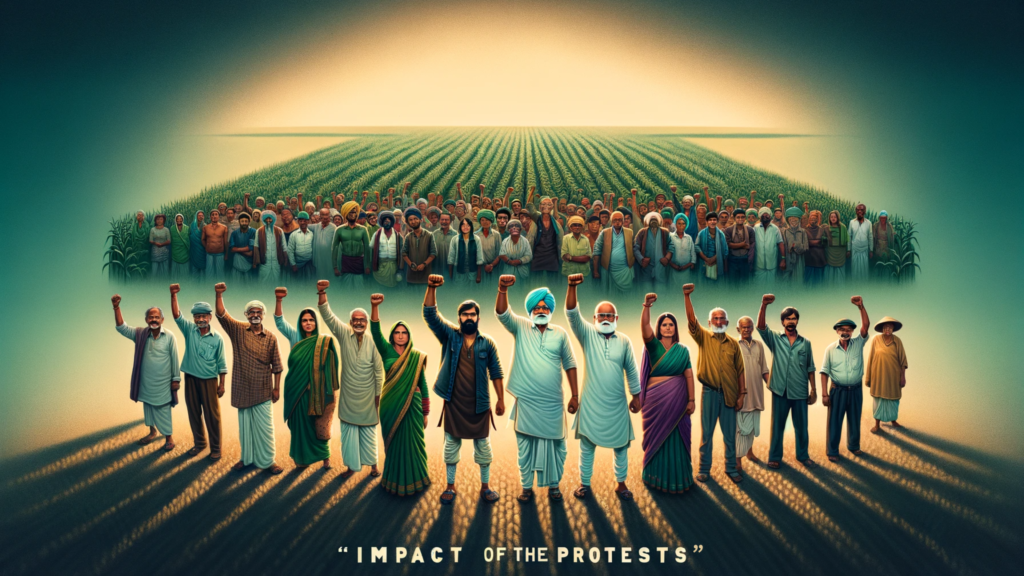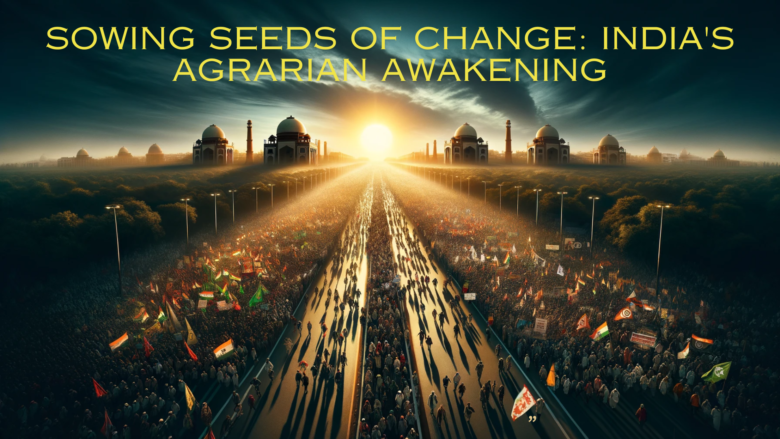In our exploration of India’s Farm Reforms, we first uncovered the origins and causes behind the Kisan Andolan. Now, in Part 2 of our series, we turn our attention to the heart of the movement: the events and actions that defined this significant chapter in Indian agrarian history. This segment aims to chronicle the journey of the farmers’ protest, capturing the spirit of resistance and the dynamics of their struggle against the farm laws.
Timeline of Events
The seeds of dissent were sown in September 2020, with the passing of three farm laws aimed at overhauling India’s agricultural sector. Viewed as a threat to their livelihood, farmers, predominantly from Punjab, Haryana, and Uttar Pradesh, mobilized en masse. Their march towards New Delhi was more than a mere protest; it was a demonstration of defiance and unity. The capital’s borders soon became the epicenter of a year-long standoff, emblematic of the farmers’ unwavering resolve. These events marked a pivotal moment, not just in the agrarian context but in the broader landscape of Indian democracy.

Protest Strategies and Government Response
The farmers’ protest was characterized by innovative and resilient strategies. Camps sprang up along highways, transforming them into hubs of resistance. Tractor rallies became symbols of the movement, while hunger strikes highlighted the depth of their commitment. Simultaneously, widespread demonstrations across India echoed the farmers’ demands. The government’s efforts at negotiation oscillated between conciliation and firmness. While initial dialogues faltered amidst mutual distrust, these interactions underscored the complexities of addressing agrarian distress in a country as vast and varied as India.

International Attention and Support
As the Andolan gained momentum, it caught the world’s eye. International figures, including Canadian Prime Minister Justin Trudeau, singer Rihanna, and activist Greta Thunberg, voiced support, bringing global focus to the farmers’ plight. This international solidarity was not just a morale booster for the protesters but also a significant factor in amplifying their message. The global discourse around the Andolan reflected a growing concern for human rights and the sustenance of democratic principles, resonating far beyond India’s borders.

Modi Government’s Reversal and Farmers’ Skepticism
The crescendo of the protest led to an unexpected development in November 2021. Prime Minister Narendra Modi, in an unforeseen reversal, announced the repeal of the farm laws. This decision, amidst the backdrop of upcoming state elections, was perceived as a direct consequence of the prolonged agitation. However, the farmers’ response was measured; their skepticism stemmed from a demand for concrete legislative action and resolutions to ancillary issues like compensation for bereaved families and environmental concerns like stubble burning.
Impact of the Protests
The Kisan Andolan transcended the confines of a typical protest, evolving into a movement that brought to light the enduring struggles and resilience of India’s farmers. It exposed the intricacies of policymaking in a diverse democracy and the critical need to balance modernization with the preservation of traditional livelihoods. The protests have opened avenues for deeper dialogues about sustainable agriculture and the rights of the agrarian community in India.

Conclusion
Part 2 of our series on India’s Farm Reforms has shed light on the dynamics of the Kisan Andolan – a movement that has redefined farmer activism in India. As we move to the final part of our series, we will explore the aftermath of this historic protest and contemplate the future pathways to support and empower India’s farmers.
Author’s Note:
In documenting the Kisan Andolan’s key events in this series, my goal is to offer more than just a recount of happenings. It’s an endeavor to shed light on the resilience and struggles of India’s farmers, a reflection of larger global agricultural issues. As we prepare for the final installment, focusing on the aftermath and future directions, I hope this series not only informs but also inspires a deeper understanding and empathy towards the agricultural community, both in India and globally.
G. C., Ecosociosphere contributor.
References





Comments
Thank you for your sharing. I am worried that I lack creative ideas. It is your article that makes me full of hope. Thank you. But, I have a question, can you help me?
Your point of view caught my eye and was very interesting. Thanks. I have a question for you.